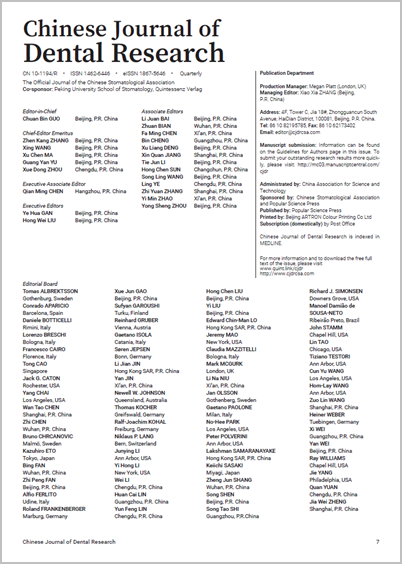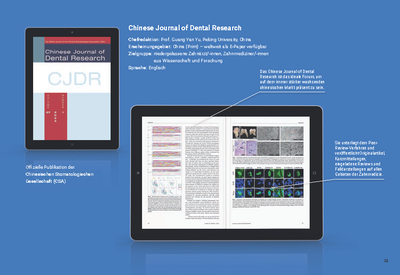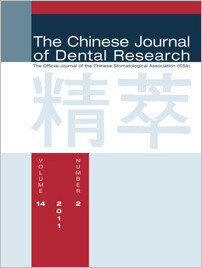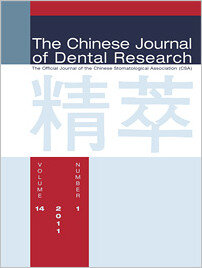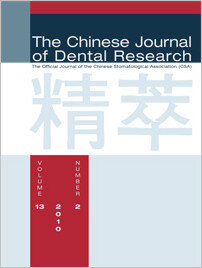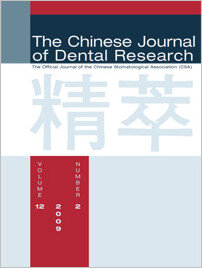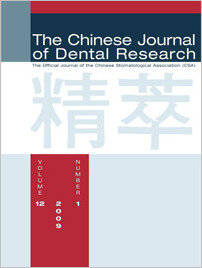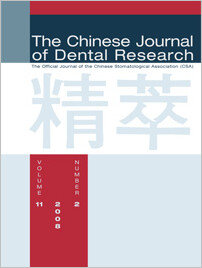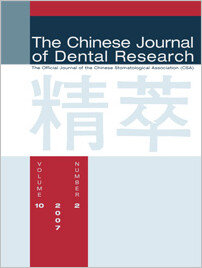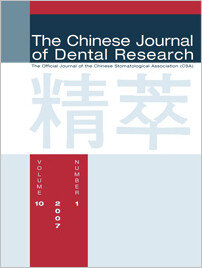PubMed-ID: 22319749Seiten: 87-94, Sprache: EnglischSeneviratne, Chaminda Jayampath / Zhang, Cheng Fei / Samaranayake, Lakshman PereraDental plaque is an archetypical biofilm composed of a complex microbial community. It is the aetiological agent for major dental diseases such as dental caries and periodontal disease. The clinical picture of these dental diseases is a net result of the cross-talk between the pathogenic dental plaque biofilm and the host tissue response. In the healthy state, both plaque biofilm and adjacent tissues maintain a delicate balance, establishing a harmonious relationship between the two. However, changes occur during the disease process that transform this 'healthy' dental plaque into a 'pathogenic' biofilm. Recent advances in molecular microbiology have improved the understanding of dental plaque biofilm and produced numerous clinical benefits. Therefore, it is imperative that clinicians keep abreast with these new developments in the field of dentistry. Better understanding of the molecular mechanisms behind dental diseases will facilitate the development of novel therapeutic strategies to establish a 'healthy dental plaque biofilm' by modulating both host and microbial factors. In this review, the present authors aim to summarise the current knowledge on dental plaque as a microbial biofilm and its properties in oral health and disease.
Schlagwörter: dental plaque biofilm, health and disease, properties
PubMed-ID: 22319750Seiten: 95-103, Sprache: EnglischChen, Zhou / Trivedi, Harsh M. / Chhun, Nok / Barnes, Virginia M. / Saxena, Deepak / Xu, Tao / Li, YihongObjective: To investigate whether a standard dental prophylaxis followed by tooth brushing with an antibacterial dentifrice will affect the oral bacterial community, as determined by denaturing gradient gel electrophoresis (DGGE) combined with 16S rRNA gene sequence analysis.
Methods: Twenty-four healthy adults were instructed to brush their teeth using commercial dentifrice for 1 week during a washout period. An initial set of pooled supragingival plaque samples was collected from each participant at baseline (0 h) before prophylaxis treatment. The subjects were given a clinical examination and dental prophylaxis and asked to brush for 1 min with a dentifrice containing 0.3% triclosan, 2.0% PVM/MA copolymer and 0.243% sodium fluoride (Colgate Total). On the following day, a second set of pooled supragingival plaque samples (24 h) was collected. Total bacterial genomic DNA was isolated from the samples. Differences in the microbial composition before and after the prophylactic procedure and tooth brushing were assessed by comparing the DGGE profiles and 16S rRNA gene segments sequence analysis.
Results: Two distinct clusters of DGGE profiles were found, suggesting that a shift in the microbial composition had occurred 24 h after the prophylaxis and brushing. A detailed sequencing analysis of 16S rRNA gene segments further identified 6 phyla and 29 genera, including known and unknown bacterial species. Importantly, an increase in bacterial diversity was observed after 24 h, including members of the Streptococcaceae family, Prevotella, Corynebacterium, TM7 and other commensal bacteria.
Conclusion: The results suggest that the use of a standard prophylaxis followed by the use of the dentifrice containing 0.3% triclosan, 2.0% PVM/MA copolymer and 0.243% sodium fluoride may promote a healthier composition within the oral bacterial community.
Schlagwörter: dental plaque, microbial diversity, PCR-DGGE, 16S rDNA clone library
PubMed-ID: 22319751Seiten: 105-111, Sprache: EnglischDuan, Shan Shan / Ouyang, Xiao Bai / Pei, Dan Dan / Huo, Yong Hong / Pan, Qiu Hua / Huang, CuiObjective: To investigate the effects of ethanol-wet bonding on the adhesion of experimental hydrophobic and commercial hydrophilic adhesives to root dentine.
Methods: A total of 43 single-rooted integrated human premolars were selected and sectioned. Of the 86 initially obtained specimens, 66 were randomly and equally divided into water-wet bonding and ethanol-wet bonding groups (n = 33). The specimens of each group were subdivided into three subgroups (n = 11) based on different adhesives: two experimental hydrophobic adhesives (Bis-GMA/TEGDMA, BT; and UDMA/TEGDMA, UT) and one commercial hydrophilic adhesive (Adper™ Single Bond 2, SB). The root surfaces were ground, acid-etched and rinsed and resin composite applied. After storing in distilled water for 24 h at 37°C, the shear bond strength (SBS) of each specimen was measured. A sample from each subgroup was randomly selected and prepared for scanning electron microscopy (SEM) analysis. The remaining 20 specimens were used in the contact angle (CA) experiment, and the values of CA were measured. SBS was analysed with two-way ANOVA/Tukey's multiple comparison test and CA with independent sample t test.
Results: A significant increase in SBS to root dentine was observed in the ethanol-wet bonding group compared with the traditional water-wet bonding group. The experimental hydrophobic adhesives (UT group) with ethanol-wet bonding presented the highest SBS (22.44 ± 3.32 MPa). CA increased significantly after the dentine surfaces were dried, especially for the water-saturated group.
Conclusion: The adhesion to root dentine surfaces with ethanol-wet bonding may be superior to water-wet bonding.
Schlagwörter: contact angle, dental adhesives, ethanol, root dentine, shear bond strength
PubMed-ID: 22319752Seiten: 113-120, Sprache: EnglischSun, Chun-Xiao / Wall, Nathan R. / Angelov, Nikola / Ririe, Craig / Chen, Jung Wei / Boskovic, Danilo S. / Henkin, Jeffrey M.Objective: To elucidate the aetiology of periodontitis, this study focused on the adenosine receptor (AR) expression profiles (A1AR, A2AAR, A2BAR and A3AR) in periodontal diseased tissues.
Methods: Adenosine receptor gene expression levels in human gingiva from 15 patients with healthy gingival tissues (control group) and 15 patients who exhibited severe chronic periodontitis (test group) were measured using quantitative reverse transcription-polymerase chain reaction (RT-PCR).
Results: The mRNA expression pattern changed in human chronic periodontitis: the A1AR decreased 20%, A2AAR increased 2.5-fold, A2BAR increased 3.7-fold and A3AR decreased 70% as compared with that of healthy gingiva.
Conclusion: Inflammation of the gingival tissue is associated with (1) an unchanged expression of A1AR, (2) an increased expression of A2AAR and A2BAR, and (3) a decreased expression of A3AR. Logistic regression analysis indicated that the change in the expression patterns can be used to diagnose/predict periodontitis. This finding indicates that the adenosine receptor expression profile is changed in periodontitis with the potential for future clinical application.
Schlagwörter: adenosine receptor, chronic periodontitis, gene expression profiling, inflammation mediator
PubMed-ID: 22319753Seiten: 121-125, Sprache: EnglischLiu, He / Zhou, Qiong / Qin, ManObjective: To compare the effects of mineral trioxide aggregate (MTA) and calcium hydroxide (CH) for pulpotomy in primary molars.
Methods: A randomised, bilateral self-controlled clinical trial was designed to compare the clinical effect of MTA and CH in pulpotomies in primary molars in 4- to 9-year-old children. Children with two similar-sized cavities on bilateral primary molar counterparts requiring pulpotomies were included. The two contralateral molars in each patient were randomly assigned to MTA or CH treatment. Clinical and radiographic examinations were performed to evaluate the treatment results at post-treatment recall.
Results: Seventeen pairs of self-controlled contralateral teeth were available for follow-up evaluations. The success rate of MTA was 94.1% (16/17), while the success rate of CH was 64.7% (11/17). Internal root resorption was the most frequent reason for failure in the CH group. Crown discolouration was common in the MTA-treated group.
Conclusion: MTA was more successful than CH for pulpotomies in primary molar teeth, and may be a suitable replacement for CH in primary molar pulpotomies.
Schlagwörter: calcium hydroxide, internal root resorption, mineral trioxide aggregate, primary molars, pulpotomy
PubMed-ID: 22319754Seiten: 127-133, Sprache: EnglischMorigami, Makoto / Uno, Shigeru / Sugizaki, Jumpei / Yukisada, Kenji / Yamada, ToshimotoObjective: To investigate the relationship between cervical lesions and patient age, brushing method and bruxism based on a clinical survey of first-appointment patients.
Methods: Two hundred and nine patients (118 male, 91 female) who had unfilled cervical lesions were examined. Information on patient age, teeth with lesions, classification of the lesions, brushing method and bruxism was obtained. The data were analysed statistically.
Results: Cervical lesions started to develop in the first premolar teeth in the early twenties and became more prevalent with age. A habit of bruxism was associated with an increase in cervical lesions. Brushing was not directly associated with the development of cervical lesions.
Conclusion: This study suggests that cervical lesions should be treated at an early stage to prevent further problems.
Schlagwörter: attrition, brushing, bruxism, cervical lesion, dental paste
PubMed-ID: 22319755Seiten: 135-140, Sprache: EnglischZheng, Chun Yan / Wang, Zu HuaObjective: To investigate the effects of chlorhexidine (CHX), Listerine and Fluoride Listerine on putative root-caries pathogens in the biofilm in the artificial mouth model.
Methods: A total of 24 human dentine discs were prepared. A biofilm composed of Streptococcus mutans, Streptococcus sobrinus, Lactobacillus rhamnosus and Actinomyces naeslundii was cultured on the surfaces of human dentine discs in an artificial-mouth model. Sucrose was supplied by computer-controlled release on a daily basis to simulate the real-life situation. Three treatment reagents, CHX, Listerine and Fluoride Listerine, were supplied at a flow rate of 15 ml/h for 6 min twice a day. The dentine discs with biofilm were removed from the artificial mouth after being cultured for 1, 2, 3, 4, 5 and 6 days. The bacteria in the biofilm were analysed by plating on BHIS agar and the colony-forming units of each species were counted.
Results: The total number of bacteria in the CHX group was significantly lower than in the other three groups (including control). There was no decline in the number of bacteria in the Listerine group. S. mutans was reduced significantly in the CHX group compared with the control group. The number and proportion of A. naeslundii in the CHX group were significantly lower than in the other three groups. The proportion of L. rhamnosus in the CHX group was significantly higher than in the other three groups.
Conclusion: CHX has the most significant effect on inhibition of the putative root-caries bacteria, with the exception of L. rhamnosus. Both Listerine and a combination of fluoride and Listerine could not effectively reduce the numbers of bacteria in the biofilm. The effects of CHX, Listerine and Fluoride Listerine on root caries prevention need further investigation.
Schlagwörter: artificial mouth, mouthrinse, oral biofilm, root caries
PubMed-ID: 22319756Seiten: 141-146, Sprache: EnglischGündüz, Kaan / Acikgöz, Aydan / Egrioglu, ErolObjective: To investigate the prevalence and associated pathologies of impacted teeth in Turkish oral patients.
Methods: A retrospective survey was carried out in 12,129 patients who visited the Department of Oral Diagnosis and Radiology, Ondokuz Mayıs University, Faculty of Dentistry, Turkey, from January 2003 to December 2007. The minimum age for inclusion was 14 years and third molar impactions were excluded from the study. To be enrolled in the study, the patient's chart had to contain a panoramic radiograph with supplemental periapical radiographs. One radiologist examined all radiographs to determine the number, orientation and types of impacted teeth and the presence of associated pathologies and developmental dental anomalies associated with this phenomenon.
Results: Of the 12,129 patients, 1117 (9.2%) patients aged 14 to 80 years had one or more dental impactions (in total 1356 impacted teeth). The male to female ratio was 1:1.4 (457:660). The maxillary canine teeth were the most commonly encountered (71.5%), followed by the mandibular premolars (8.6%). The analysis of the orientation of the impacted teeth showed that 480 impacted teeth were in a mesioangular position (35.4%), followed by vertical (28.9%), distoangular (18.9%), horizontal (16.5%) and buccolingual (0.3%) orientations.
Conclusion: The prevalence of non-third molar impacted teeth was 9.2% among Turkish oral patients. The maxillary canines were the most frequent impacted teeth. The most common orientations of impacted teeth were the mesioangular position and vertical orientation. The most frequent associated pathologic change was cystic change.
Schlagwörter: canine, impacted teeth, panoramic radiograph, prevalence, radiology
PubMed-ID: 22319757Seiten: 147-150, Sprache: EnglischOuyang, Dong / Gu, Xiao Ming / Lei, De LinObjective: To evaluate the long-term results of open reduction and rigid internal fixation for treatment of dislocated condylar process fractures.
Methods: Twenty-five patients with dislocated condylar fracture who underwent open reduction and rigid internal fixation were followed up for an average of 4.5 years and evaluated on the basis of occlusion, temporomandibular joint (TMJ) function and radiographs.
Results: Clinically, both occlusion and TMJ function were satisfactory. Generally, the dislocated condyles were well repositioned into the glenoid fossa after rigid internal fixation and remained in the position during the follow-up on the radiographs.
Conclusion: Open reduction and rigid internal fixation could achieve satisfactory results for the treatment of dislocated condylar fractures.
Schlagwörter: condylar process fracture, rigid internal fixation
PubMed-ID: 22319758Seiten: 151-153, Sprache: EnglischDu, Yi / Soo, Irwan / Zhang, Cheng FeiIdentifying the variations of root canal morphology is crucial prior to commencing any endodontic treatment. The advancement of current endodontic instrumentation and technology has greatly enhanced treatment outcomes, which are now more predictable. This clinical case report presents a case of a maxillary first molar showing six root canals and apical foramina, i.e. three mesiobuccal canals, two palatal canals and one distobuccal canal. The occurrence of bifurcation in the second mesiobuccal canal is also emphasised.
Schlagwörter: maxillary first molar, mesiobuccal canal, six canals, ultrasonic
PubMed-ID: 22319759Seiten: 155-158, Sprache: EnglischZhou, Min / Xu, Li / Meng, Huan XinHereditary gingival fibromatosis (HGF) is a rare condition characterised by severe gingival hyperplasia, which could result in serious aesthetic and emotional problems and functional impairment. Here the present authors report a case of a 28-year-old female patient with generalised severe gingival enlargement covering almost all of the teeth and diagnosed as HGF. Her family history was of significance, since her father and 3-year-old daughter suffered from the same symptoms. Many studies have agreed that surgical removal should be used in the treatment of HGF, and gingivectomy is the most common method. This study tried both external and internal bevel incisions. The results suggest that the former is better for shaping gingival contour, if the attached gingiva is adequate. Correct physiological contour of the marginal gingiva, good oral hygiene and periodic recall can decrease recurrence risk. Post-surgical follow-up after 26 months demonstrated no recurrence and the patient was satisfied with her appearance.
Schlagwörter: hereditary gingival fibromatosis, treatment






